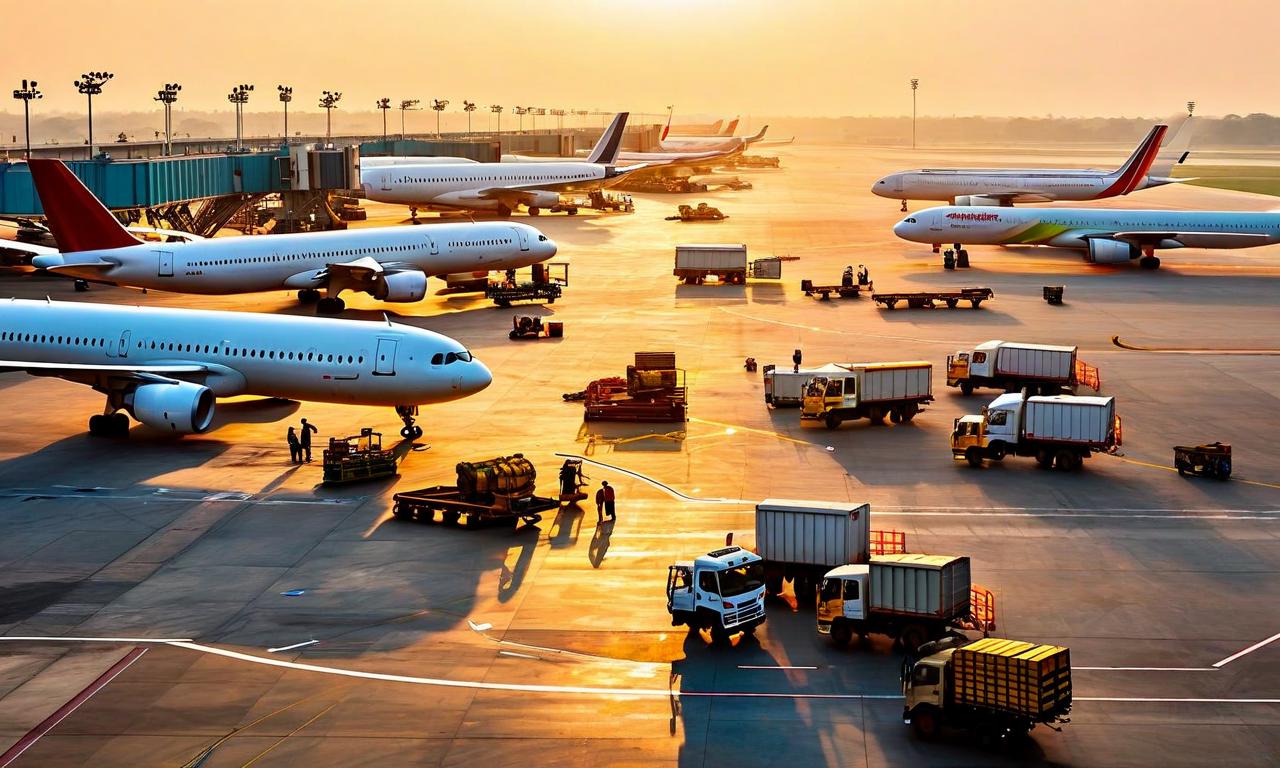India's Air Traffic Dips 2.9% as IndiGo Expands Market Share
India's domestic air passenger traffic declined by 2.9% year-on-year to 126 lakh passengers. IndiGo increased its market share to 65.2%, while the Air India group's share fell to 26.2%. Load factors decreased across airlines, with Air India Group dropping to 78.6% and IndiGo to 84.1%. IndiGo reported a quarterly net profit of ₹2,176.00 crore, down 20.2% year-on-year, while Air India and Air India Express recorded pre-tax losses of ₹9,568.40 crore. Akasa Air and SpiceJet also reported losses.

*this image is generated using AI for illustrative purposes only.
India's aviation sector experienced a notable shift, with domestic air passenger traffic witnessing its first contraction in months. The industry saw a 2.9% year-on-year decline, with total passenger numbers dropping to 126 lakh for the month.
Market Share Dynamics
Despite the overall industry downturn, IndiGo, India's largest airline, managed to strengthen its market dominance. The carrier increased its market share to 65.2%, up from 64.5% in the previous month. This growth came at the expense of its competitors, particularly the Air India group.
The Air India group, which includes Air India, Air India Express, and Vistara, saw its market share decline from 27.1% to 26.2%. This shift underscores the intensifying competition in India's aviation market and IndiGo's ability to capture a larger slice of the shrinking passenger base.
Load Factors Under Pressure
The industry-wide passenger decline was reflected in the load factors across airlines:
| Airline | Current Load Factor | Previous Load Factor | Change |
|---|---|---|---|
| Air India Group | 78.6% | 81.5% | -2.9% |
| IndiGo | 84.1% | 85.4% | -1.3% |
The Air India group experienced a more significant drop in load factor compared to IndiGo, indicating that IndiGo managed to maintain higher capacity utilization despite the challenging market conditions.
Financial Performance
The financial results of major airlines reflect the challenges faced by the sector:
IndiGo: The market leader reported a quarterly net profit of ₹2,176.00 crore, marking a 20.2% year-on-year decline. However, the airline's revenue grew by 4.7% to ₹20,496.00 crore, showcasing its ability to generate higher income despite market headwinds.
Air India and Air India Express: The combined entities recorded substantial pre-tax losses of ₹9,568.40 crore, highlighting the significant challenges faced by the national carrier and its subsidiary.
Akasa Air: The relatively new entrant in the market posted losses of ₹1,983.40 crore, reflecting the difficulties of establishing a foothold in a competitive and contracting market.
SpiceJet: The budget carrier reported losses of ₹58.10 crore, faring better than some of its competitors but still struggling to achieve profitability.
Industry Outlook
The recent data marks a turning point for India's aviation sector, with the first contraction in passenger traffic after months of growth. This decline, coupled with the varied financial performances of airlines, suggests a challenging period ahead for the industry.
IndiGo's ability to expand its market share and maintain relatively high load factors in a declining market demonstrates its strong position. However, the overall industry contraction and the financial struggles of major players indicate that airlines may need to adapt their strategies to navigate the current market conditions effectively.
As the sector grapples with these challenges, it remains to be seen how airlines will adjust their operations, pricing strategies, and route networks to stimulate demand and improve financial performance in the coming months.























